Ancient Mesopotamia
Ivory plaque of a lioness devouring a boy
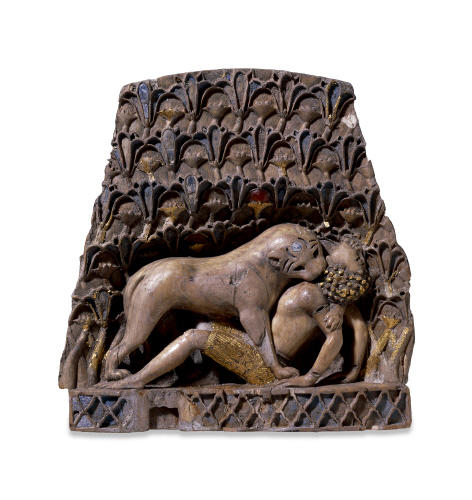
- Date: 9th-8th century BC.
- Place of origin: the palace of Ashurnasirpal II, Nimrud, northern Iraq.
- Detailed Description: The carving depicts the scene of a lioness attacking an African boy wearing jeweled bracelets and armlets (“Ivory plaque of a lioness,” n.d.).
- Historical Value: The piece of art is a significant source of learning about Mesopotamian art. It shows the level of carving mastery at the time. The tiniest details are clear and accurate.
The image proves the statement that the art from the region is fearsome. In the carving, a scene of a young boy’s death is depicted. Moreover, he is being killed by a dangerous animal. This carving demonstrates cruelty and danger.
The Black Obelisk
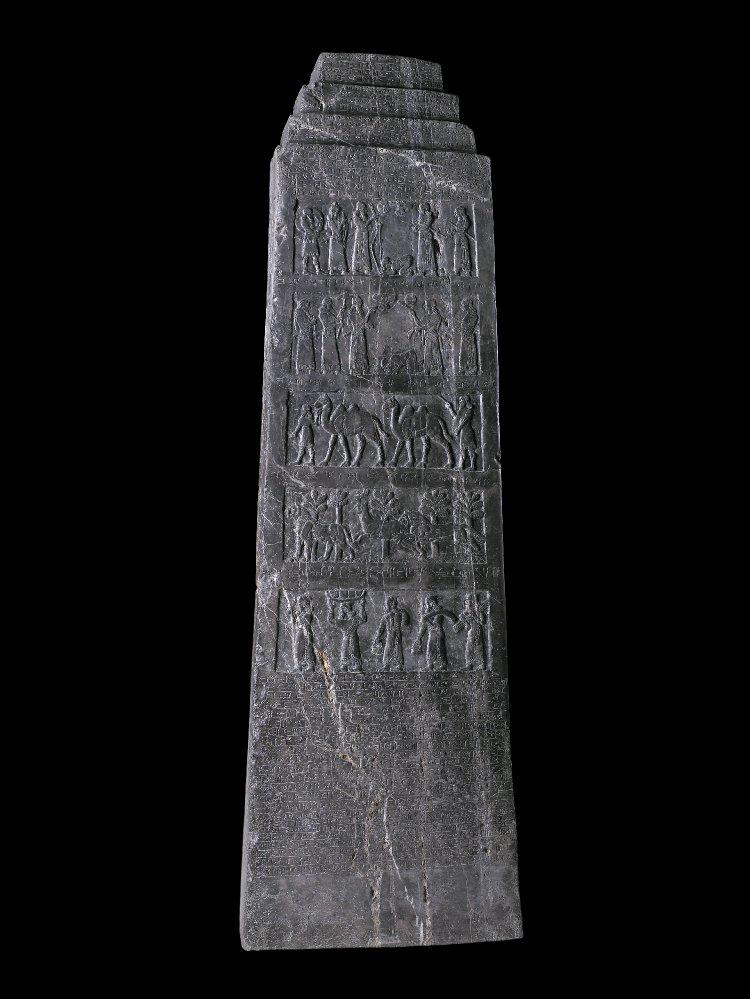
- Date: 825 BC.
- Place of origin: Nimrud, northern Iraq.
- Detailed Description: a limestone obelisk depicting Shalmaneser III, praising the king’s and ministers’ accomplishments (“The black obelisk,” 2017).
- Historical Value: The piece shows the mastery of stone-carving art. It is significant as it teaches about the hierarchical structure of the period. Also, it demonstrates the values favored at that time.
The image proves the statement about the political nature of art from Ancient Mesopotamia. The king is depicted as the highest element of the hierarchical structure. “Tribute bearers” demonstrate how people used to please their ruler (“The black obelisk,” 2017). Also, there is evidence of animal hunting, which is also an image of cruelty.
The Warka Vase
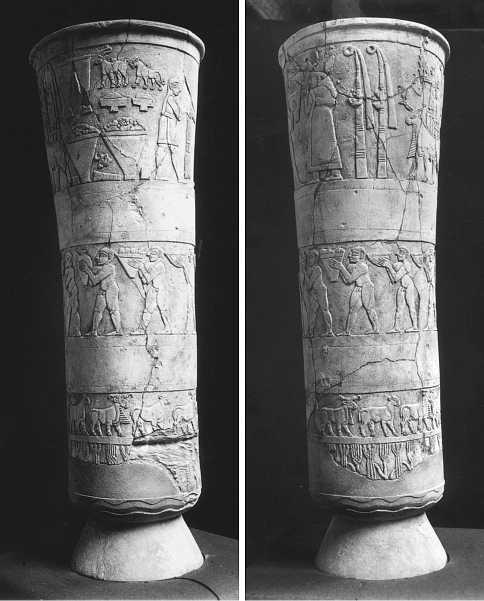
- Date: ca. 3000 BC.
- Place of origin: Uruk, southern Iraq.
- Detailed Description: a carved alabaster vase; nearly 100 cm high.
- Historical Value: The vase presents a great value since it depicts people’s beliefs. The piece tells much about the cultural and religious life of the people (“The Warka vase,” 2015). Also, it demonstrates the art of carving on stone.
The image disproves the statement. The vase does not show any fearsome or political actions. There are images of gods and people carrying gifts to them. The vase shows the implications of marriage traditions.
Ancient Aegean
Elegant ewer
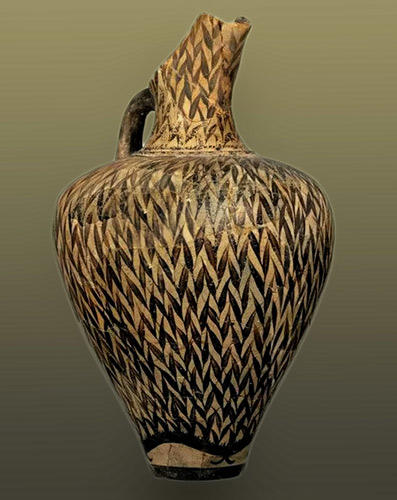
- Date: 1450 BC.
- Place of origin: Crete.
- Detailed Description: An urn decorated with reed pattern.
- Historical Value: The ewer shows one of the tools Minoans used to make their everyday chores easier. The pitcher demonstrates that they cared not only about comfort but also the pleasant outlook of objects (“Minoan art pottery,” 2013). The historical value is in depicting how important such things were for the people.
The image proves the statement. Minoans (one of the civilizations belonging to the Aegean art period) created harmonious and pleasant-looking tools and dishes. The vase demonstrates the artistic choice of form and colors. The author even created a pattern to make the piece look more esthetic.
Dolphin Fresco
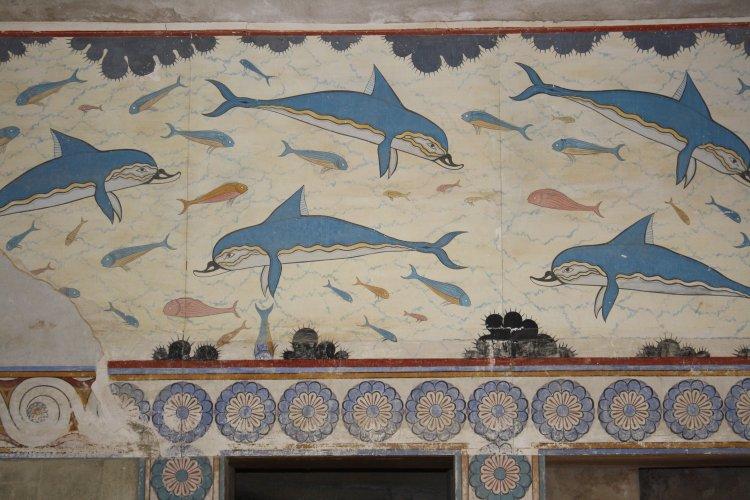
- Date: ca. 1500 BC
- Place of origin: The Palace of Knossos, Crete
- Detailed Description: The fresco shows dolphins underwater; the author did not try to show the depth, but the movements are rather realistic
- Historical Value: The fresco is important historically. It shows the esthetic feelings of people living during the Aegean period. The colors are vivid, and the dolphins look quite realistic (Dolphin fresco, 2013).
The image entirely proves the statement about the harmony and absence of threat in Aegean art. the artist portrayed the beauty of underwater life. There are exuberance and peacefulness in colors and movements. The fresco is the embodiment of serenity.
The Mask of Agamemnon
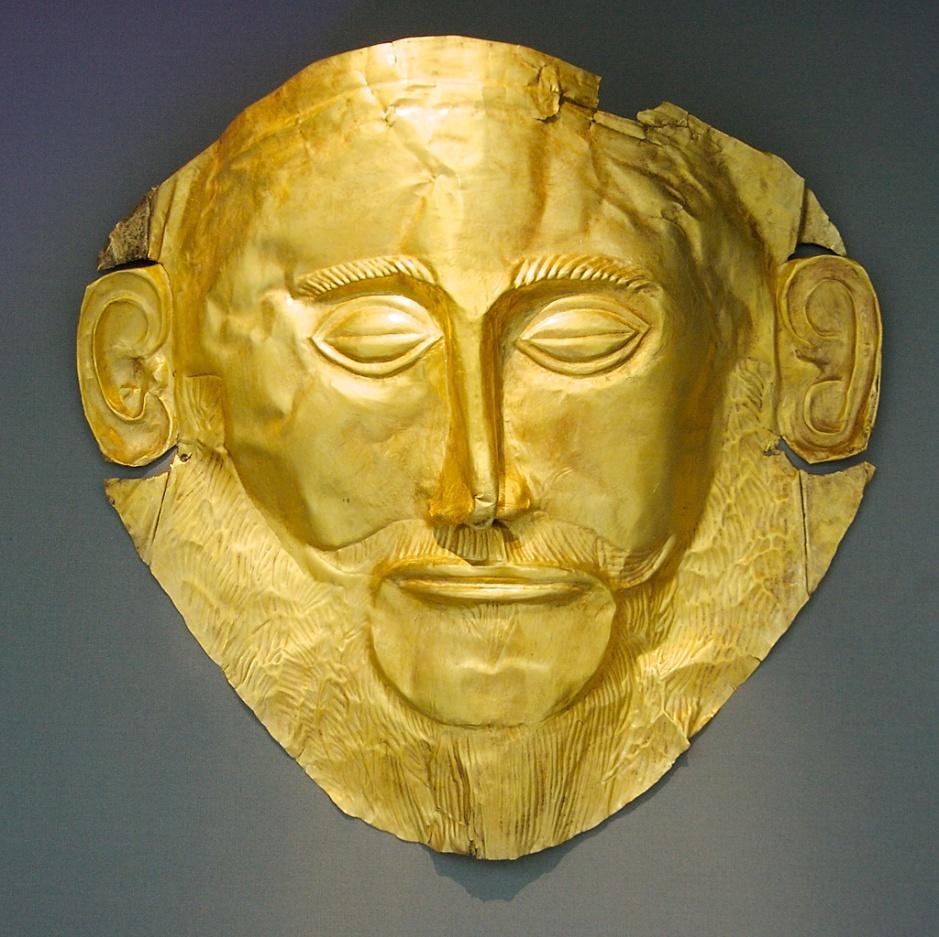
- Date: 1550-1500 BC.
- Place of origin: Mycenae.
- Detailed Description: A funeral mask made of gold.
- Historical Value: The artifact shows the burial traditions of the period. Also, it demonstrates people’s craft (the neat work of smiths). The great historical value is emphasized by the mask’s nickname – “Mona Lisa of Prehistory” (Dilouambaka, 2016).
The piece proves the statement about Aegean art. The mask symbolizes respect for the deceased people. There are no signs of cruelty or hatred. The material – gold – indicates the exuberance of the image.
References
The black obelisk. (2017).
Dilouambaka, Ethel. (2016). Seven Ancient Greek artworks you should know. The Culture Trip.
Dolphin fresco. (2013). Web.
Ivory plaque of a lioness devouring a boy. (n.d.).
Minoan art pottery. (2013).
The Warka vase. (2015). Web.